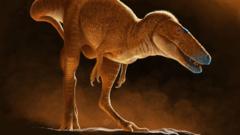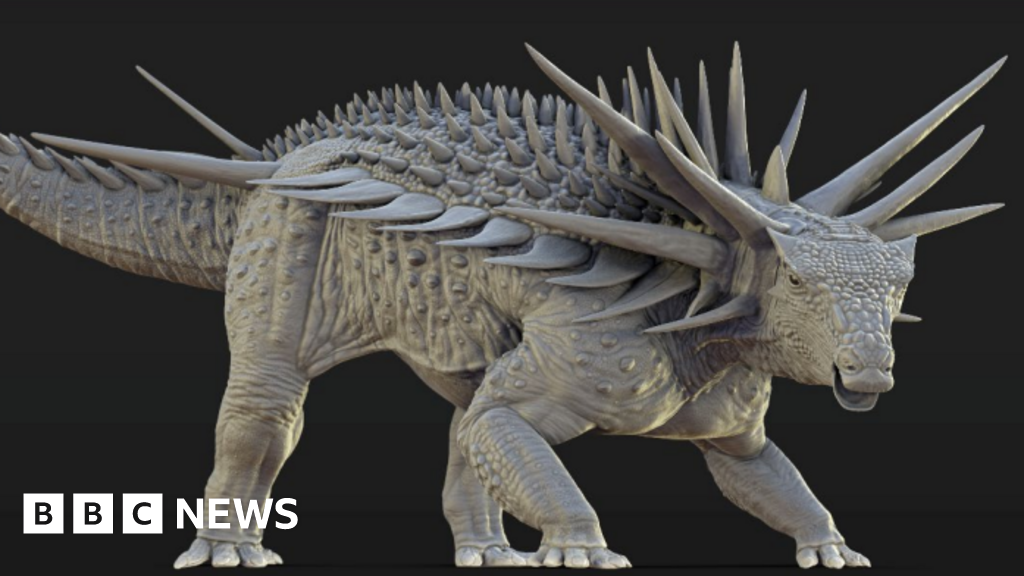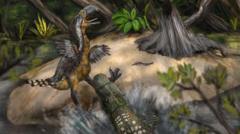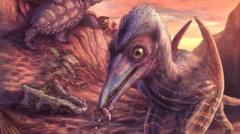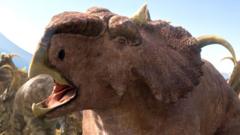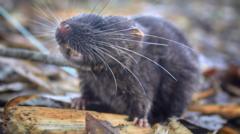In a significant breakthrough, researchers have identified a new species of dinosaur, Khankhuuluu mongoliensis, housed in a Mongolian museum. This discovery is deemed crucial as it "rewrites" the evolutionary narrative surrounding the tyrannosaurs—a lineage that includes the renowned T.rex.
The 86 million-year-old skeletons studied are the closest known ancestors to all tyrannosaurs, reshaping scientific perspectives on these iconic predators. "The term 'Prince' in its name signifies its status as an early, smaller tyrannosauroid," explained Prof. Darla Zelenitsky from the University of Calgary, emphasizing its role in the evolutionary shift from pint-sized hunters to the gigantic predators that dominated North America and Asia.
Weighing approximately 750kg, Khankhuuluu contrasts sharply with the heft of an adult T.rex, which could weigh up to eight times more. Prof. Zelenitsky remarked that this transitional fossil aids in clarifying the tyrannosaur family tree, providing insights into the evolutionary traits such as robust skull anatomy that contributed to their notorious strength and biting capabilities.
The fossils were discovered in Mongolia during the 1970s and were initially categorized under the name Alectrosaurus. However, PhD student Jared Voris recognized distinct features that warranted distinction as a new species, prompting excitement within the research team.
Their studies reveal that the ability of these dinosaurs to migrate between North America and Asia played a crucial role in diversifying the tyrannosaur species over eons. "The geographical shifts catalyzed evolution and adaptation," noted Voris, pointing to the dynamic nature of prehistoric ecosystems.
As Prof. Zelenitsky aptly summarises, "This discovery highlights that before tyrannosaurs became the kings of their domain, they were indeed princes." The exploration continues to illuminate the evolutionary pathways that led to one of history’s most fearsome carnivores.
The 86 million-year-old skeletons studied are the closest known ancestors to all tyrannosaurs, reshaping scientific perspectives on these iconic predators. "The term 'Prince' in its name signifies its status as an early, smaller tyrannosauroid," explained Prof. Darla Zelenitsky from the University of Calgary, emphasizing its role in the evolutionary shift from pint-sized hunters to the gigantic predators that dominated North America and Asia.
Weighing approximately 750kg, Khankhuuluu contrasts sharply with the heft of an adult T.rex, which could weigh up to eight times more. Prof. Zelenitsky remarked that this transitional fossil aids in clarifying the tyrannosaur family tree, providing insights into the evolutionary traits such as robust skull anatomy that contributed to their notorious strength and biting capabilities.
The fossils were discovered in Mongolia during the 1970s and were initially categorized under the name Alectrosaurus. However, PhD student Jared Voris recognized distinct features that warranted distinction as a new species, prompting excitement within the research team.
Their studies reveal that the ability of these dinosaurs to migrate between North America and Asia played a crucial role in diversifying the tyrannosaur species over eons. "The geographical shifts catalyzed evolution and adaptation," noted Voris, pointing to the dynamic nature of prehistoric ecosystems.
As Prof. Zelenitsky aptly summarises, "This discovery highlights that before tyrannosaurs became the kings of their domain, they were indeed princes." The exploration continues to illuminate the evolutionary pathways that led to one of history’s most fearsome carnivores.

